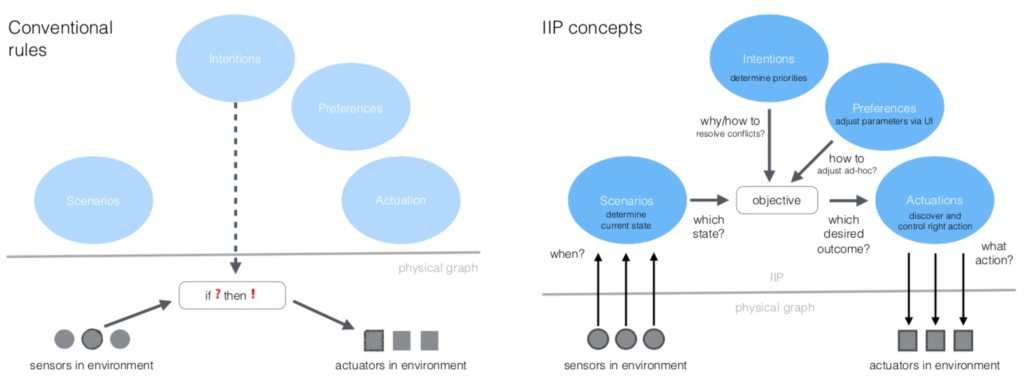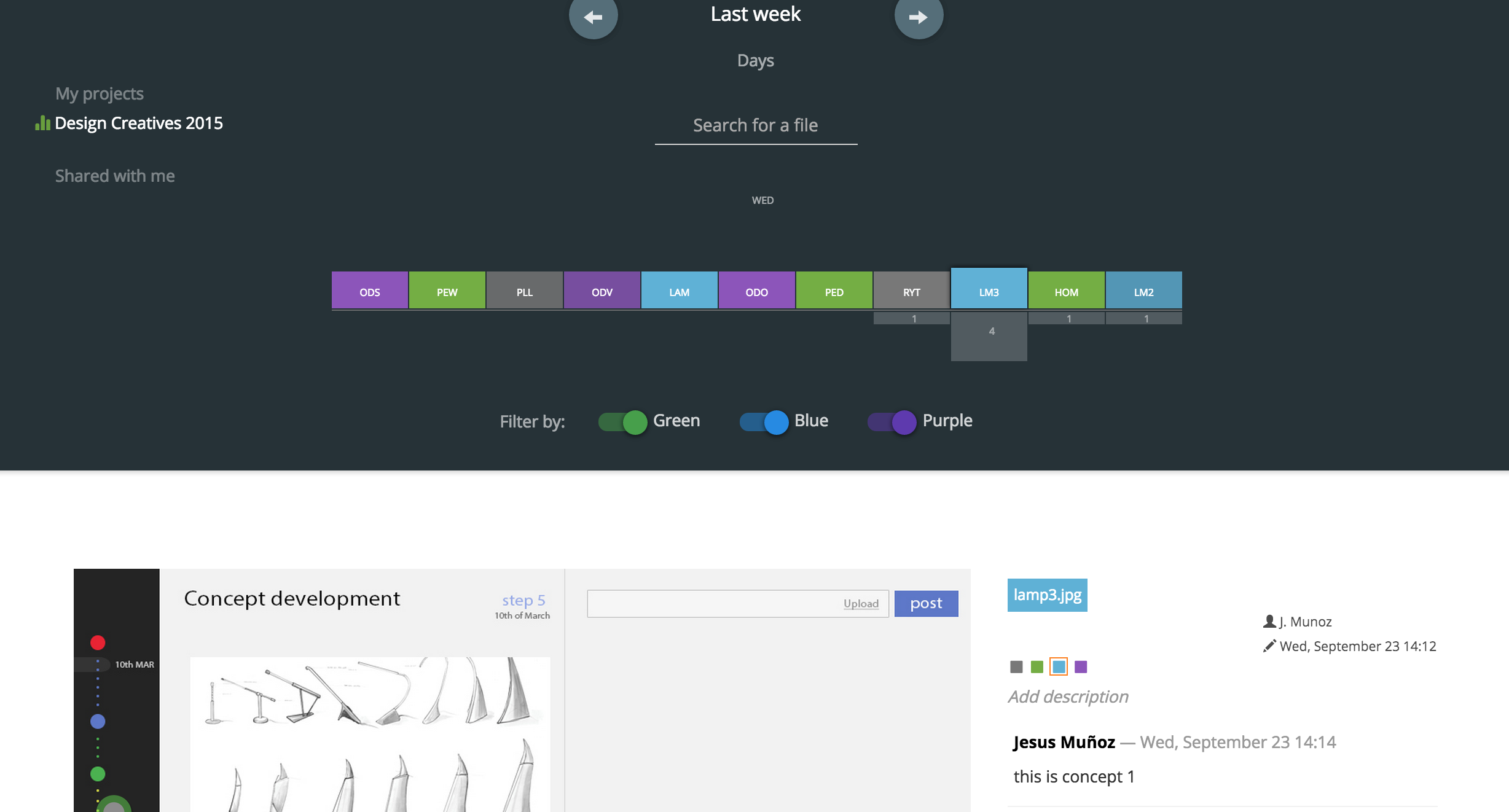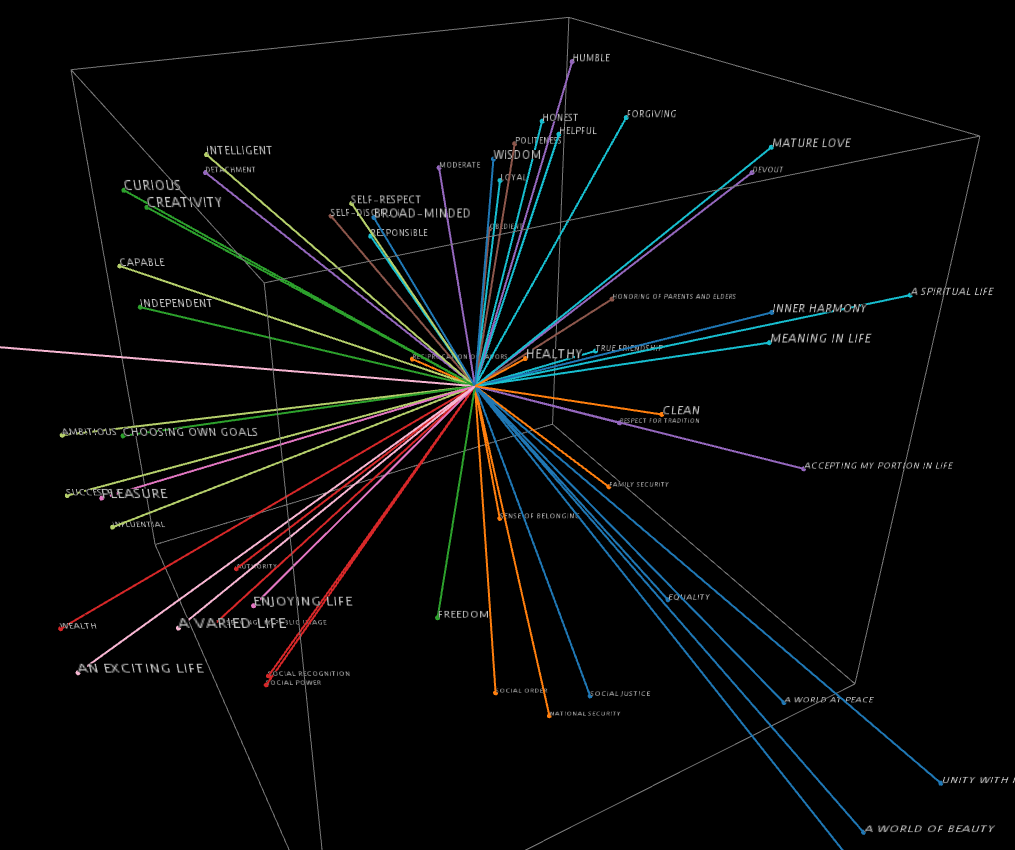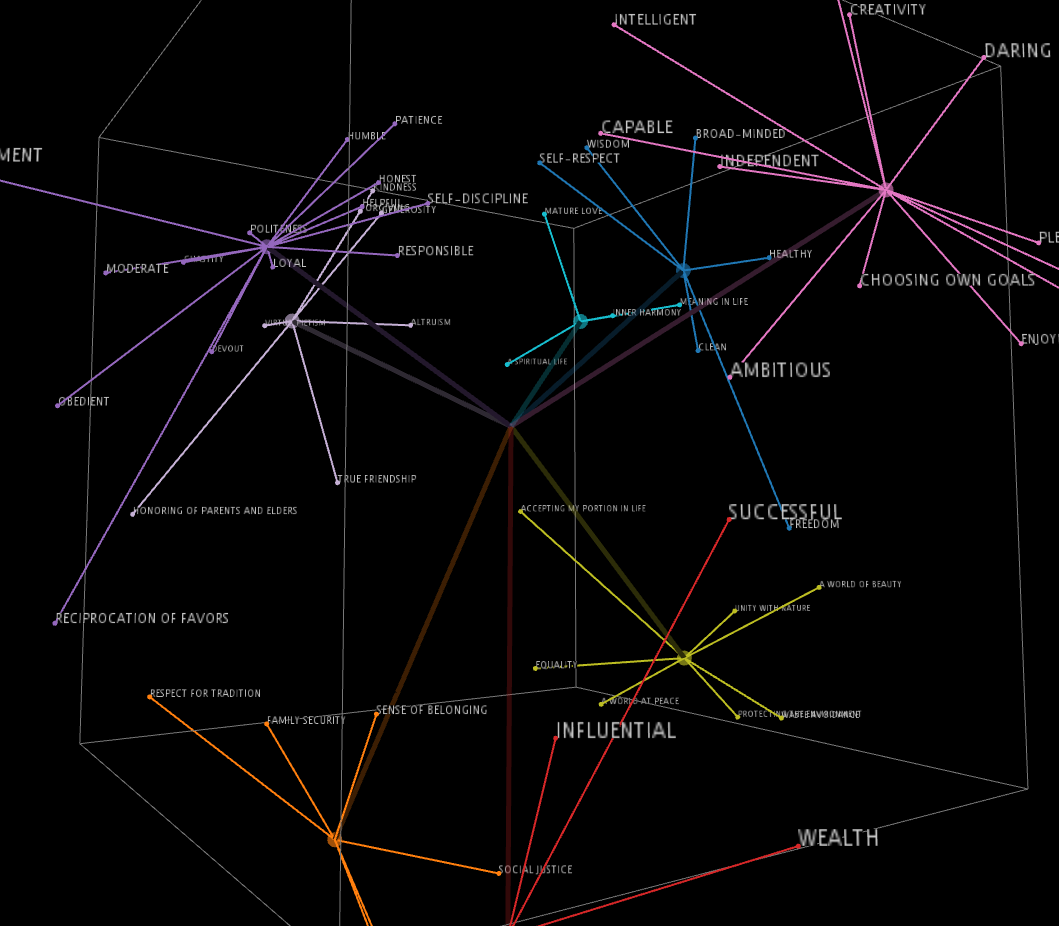Thinking
Let’s talk about design research. Since long I have been fascinated by design, both in aesthetics and process, and by software systems with all their complexities and inherent qualities. Since 2011, I work at the Industrial Design department at Eindhoven University of Technology (TU/e) to research exactly that.
My main research interest is how designers can design with and for data and systems behavior. Hereby I work primarily on design tools, and layers between engineering matter and modern industrial design. Beyond this, I research new musical and visual expression, feedback and collaboration tools, and human values in design. In the following I show several current research projects I am leading or involved in as a researcher. If you are interested in past research projects, so be it.
Design tools and methods
As a step beyond interaction design, we need to develop and nurture expertise to design the emergence of system-level capabilities and qualities. Designers will need to go beyond taking products at face value and address dynamic structural and behavior complexities in design. New and newly grown IoT systems consist of networked artefacts that form their own ecologies and behave as populations rather than individuals. Designers also will need to address important concerns such as locality more consciously. Local IoT systems in homes, in transit, smart workspaces, and healing environments are intimately close to us, situated in shared spaces, invisible and intangible, and yet highly distributed to sense and touch. Together, new kinds of complexity and contextuality, are the challenges that we need to study, investigate, map out, then learn to design for, provide tools and methods to create everyday applications and interventions with emergent qualities.
Data Foundry
Data Foundry is a new data infrastructure for design research that debuted at ID Eindhoven in 2019. We started this project to enable all design researchers (both students and staff) to collect, store, process and export data. I’m leading the design and development of this web application development project with one full-time programmer and a design TA. [more]
OOCSI
OOCSI, short for “Out of Control for Semantic Interactivity”, is a simple, easy-to-use connection fabric that allows designers to easily create distributed systems. OOCSI allows designers to work with connectivity in an intuitive, low-threshold way, and also benefit from a “high ceiling” in terms of advanced features that will take them directly into the domain of systems design–if they wish to follow. [more]
Data-enabled Design
Data-enabled Design is a design method around using data as a creative design material. Design research on data-enabled design is carried out in collaboration with Philips Experience Design and other industrial partners, involving several PhD students, postdocs and industrial and academic design researchers. We investigate methodological advances as well as building a framework of related concepts and supporting structures for effective implementation of Data-enabled Design in (industrial) design research and practice.
Data Sense-making
Over the last years, several Master and PhD students have worked on data sense-making, blending creative data acquisition and data representation in visualization, physicalization and sonification. Data sense-making is important for design research and practice as it allows to work with data from a context in constructive ways. Compared to data science, data sense-making is more contextual and takes liberties in going back to the source of data and changing what is collected and when. Data sense-making is related to Data-enabled Design, focusing more on design research into data and data representation than the objective of producing data-enabled design interventions.
Things Ecology
When the Internet of Things extends to personal living and work spaces, what we experience are interactions with “Things”. These are interactive, connected products that form local ecologies and contribute increasingly to our Everyday. My research in this domain focuses on design tools helping designers create novel members of such ecologies, and on specific classes of things that are calm, unaware and simply co-existing. This research is part of the ID Computational Design Systems cluster. [more]
Interactive Intentional Programming (IIP)

The Internet of Things (IoT) and connected products have become part of the advance of ubiquitous technology into personal and professional living spaces, such as the smart home. What connectivity and distributed computing have made possible, is still programmed only according to more or less simplified rule systems (or in traditional code); the mapping between what end-users intend (or would value) and what can be expressed in rules is not straight-forward… [more]
Feedback.camp + Sketchdrive

Feedback.camp
Feedback.camp is a feedback system for supporting (design) educators in giving prompt feedback and providing formative and summative assessment in larger courses. This project was supported by the 3TU Bachelor College Innovation Fund over three consecutive years. [more]
Sketchdrive
Sketchdrive is a similar education innovation project. In this project, we aimed at sketching (both as skill development and design tool). Sketchdrive is a commercial tool now. The project was supported by Eindhoven municipality.
Design Collaboration

Collaboration among distributed design teams, across timezones and member roles, is not easy. This project is part of the larger COnCEPT (EU-FP7) project. At Industrial Design we realised a working demonstrator as shown in the shot below:
The web application connects to shared folders of a design team and visualizes activity of team members based on file activity. The working prototype is currently being tested.
Human Values in Design

This research project looks at how human values impact the perception, usage and long-term adoption of designs with a focus on a possible divide between the designer’s and user’s cultural backgrounds. Part of this research is a larger empirical investigation into the general perception and importance of 63 human values. These results are analyzed, clustered and compared with theoretical value frameworks.

Above and below two shots of the custom 3D visualisation are shown that we use to better understand relationships between values, empirical results, and theory.
A first version of the HuValue tool could be found at huvaluetool[.]com; the website was, however, discontinued.
PULP Scription
PULP is a software for authoring interactive screen-based experiences on the web or on mobile platforms. Unlike other, similar tools (and there are quite some), PULP is based on a new language. This language allows to express concepts of interaction directly in relation to visual elements that are interacted with and upon. The software package was–at the time–available for Mac, Windows and Linux. [more]

